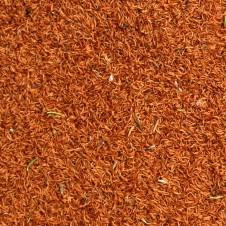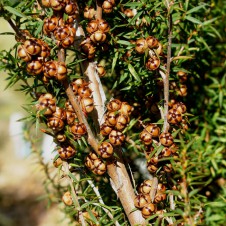General Description: A variable, prickly-leaved shrub, usually not taller than 2 m in heath-lands, but occasionally forming taller thickets near streams. The capsular fruits are persistent on older wood.
Flowers and Fruit: Masses of white flowers to 10mm wide, from September to February.
Fruit are woody capsules 8-11 mm diameter, round and containing seed. Capsules remain on plant, and retain their seed, until the plant (or the branch holding the capsules) dies.
Site Preference and Tolerances: Prefers full sun and moist to waterlogged soils.
Life Span: Medium (20 to 80 years) to long-lived.
Wildlife Value: The flowers of this plant attract a myriad of insects to the nectar including predatory wasps and flies that in turn make up important life cycles within the biodiversity of wet heath-lands. Attracts both nectar and seed-eating insects and birds. Butterfly attracting.
Other Values and Uses: Useful for low shelter in few-rowed, narrow, pure shelterbelts or used with taller belts of eucalypts to provide a high level of protection near the ground. Has showy white, scented flowers and can withstand cutting back to produce hedges or a screen. It is fast-growing and can be pruned to encourage branch development. Good cut flower filler. The stems and wood were used by the Aborigines to make pegs and spears.
Other Scientific Names: Leptospermum juniperinum, Leptospermum scoparium
Other Common Names: Black Tea-tree, Prickly Teatree
Germination Information: Can be propagated easily from seed and will direct seed well if weeds are controlled. Usually germinates in 2-5 weeks.


